A board game 'Planet B' play review in which a politician becomes a president, manipulates the masses, creates slush funds, and dominates the political and financial world

In the not-too-distant future, the planet 'Planet B', which has become a new residential area to replace Earth, becomes a corrupt governor and earns activity funds and materials, sometimes puts some of the money earned in his pocket, and holds an election for the presidential seat. The Japanese version of the board game ' Planet B ' was released by
Planet B - ArclightGames Official
https://arclightgames.jp/product/817bea/
◆Contents
The Planet B package looks like this.

The game is suitable for 2-4 players, ages 14 and up, and estimated play time is 30-45 minutes per player.

Open the package and you'll find the rules manual and various tokens.

Game board and player boards.

The game includes headquarters cards, newspaper cards, building cards, law cards, position cards, and a final score summary card.

The currency used during the game and the bag to collect votes. The unit of currency is 'Billy'.

◆Game Preparation
First, spread the game board out on the table.

The game board has a front and back for 2-3 players and a back for 4 players, and you use the number of players written in the upper left corner. Since we are playing with 3 people, we used the side that says '2-3'.

The left side of the game board is lined up with billy cards to form the 'bank.'

Place the faction board at the top of the game board.

Prepare the conglomerate tiles. Each conglomerate tile is marked with either A or B in the bottom left corner, and you shuffle them with the grey side up.

Then, arrange the three A conglomerate tiles as follows. The only conglomerate tile placed in the middle is turned over, with the red side facing up.

The remaining conglomerate tiles are placed in a pile next to the game board.

Put the suitcase tokens, container tokens, artisan tokens, and brain worker tokens together next to the game board as the 'common inventory.'

Place four white disks on the game board as shown below. The area where one disk is placed on the top row is called the 'market' and the area on the bottom row is called the 'election track.'

Shuffle the building cards into three types, A, B, and C, and place each in the designated position at the bottom right of the game board.

Shuffle the newspaper cards into three types, I, II, and III, and place each in the designated position at the bottom left of the game board. Flip over the top card of each deck to reveal it.

Prepare three position cards and a bag and place them near the game board. Note that there are four position cards, but since this is a three-player game, the 'DODO (General Affairs Director)' card has been removed.
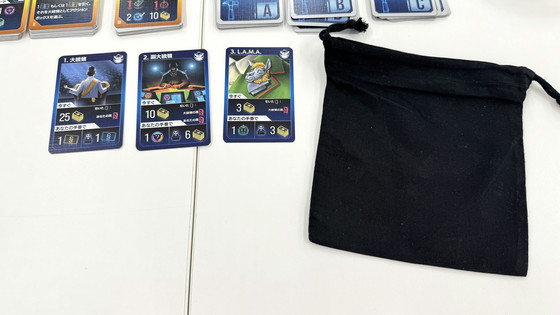
Next to it, shuffle the law cards and place them as a deck. There are two types of law cards: 'normal laws' with an orange back, and 'immoral laws' with a blue back.
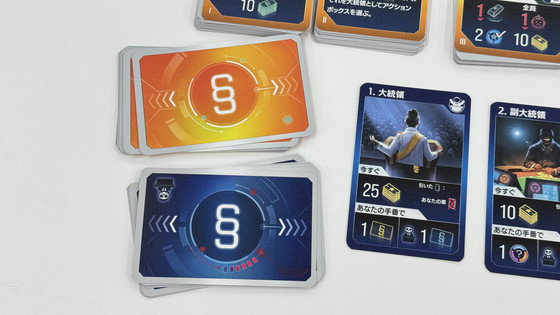
Next, set up the player board.
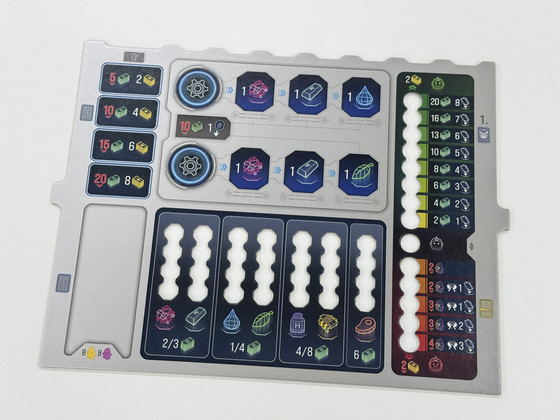
Each player board has a number, which can be checked on the back or the top right of the front. Arrange the player boards clockwise from the lowest number. The player with the lowest number becomes the starting player, so it is recommended that players decide in some way who will play the game at this time.

Choose your color from red, yellow, blue, or green, and place the cheat tiles and production tiles with the backs that match your chosen color on your player board.

Players place vote tokens of their color next to their player board. By putting these votes in a bag, the number of votes won in the presidential election held during the game will change.
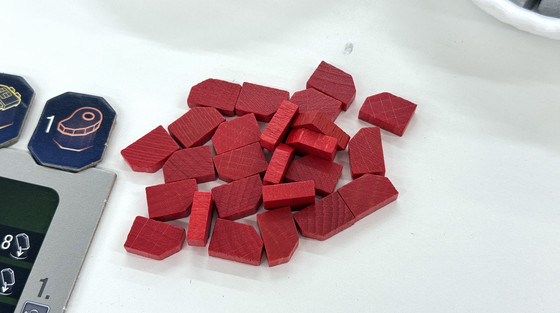
Then, place the three vote tokens in a bag.
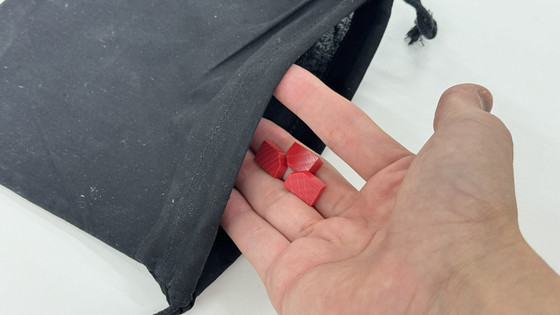
Place a satisfaction marker on the 'neutral' center of the satisfaction meter on the right of your player board. This satisfaction level indicates how satisfied the general public is with you, and will fluctuate during the game.
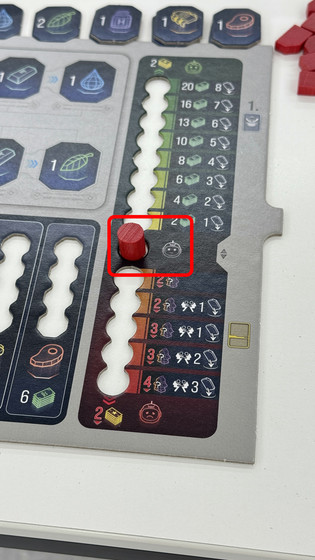
Place your disk on the faction board. The faction board has three rails: Capitalism, Futurism, and Traditionalism. Place your disk on the first square on the far left.
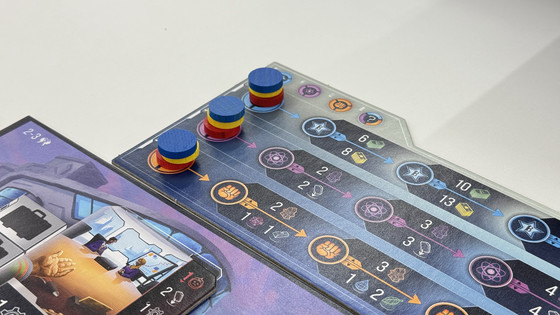
You will receive 10 Billy as your initial funds. At the same time, you will receive two orange craftsman tokens and two purple brain worker tokens, and place them in the worker area at the bottom left of your player board.
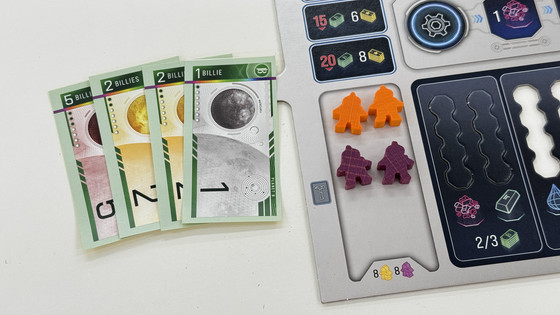
Place the HQ card in the top left corner of your player board.
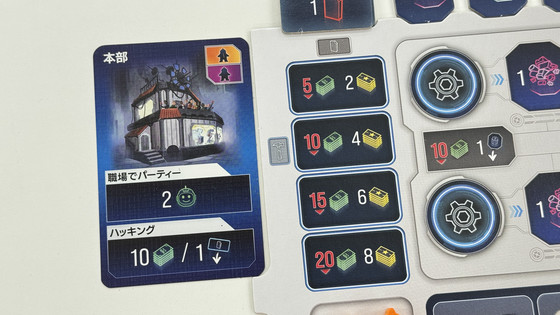
Distribute summary cards that explain how the final scores were calculated.
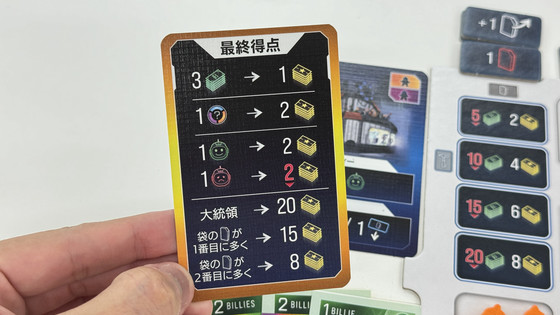
Next, prepare your hand. Your hand will consist of three building cards. First, take three cards from the deck of A building cards, and the last player to play will choose one and pass the rest to the person to their right to get the cards in a
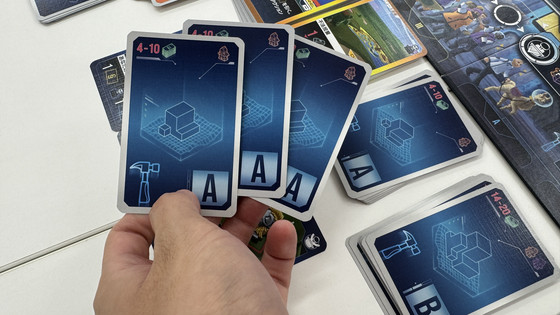
Next, B's building card will be acquired from the ' first player in the play order ', and C's building card will be acquired from the ' last player in the play order ', in the same draft format. Now, everyone's hand will have one A, one B, and one C building card, for a total of three cards. This completes the game preparation.
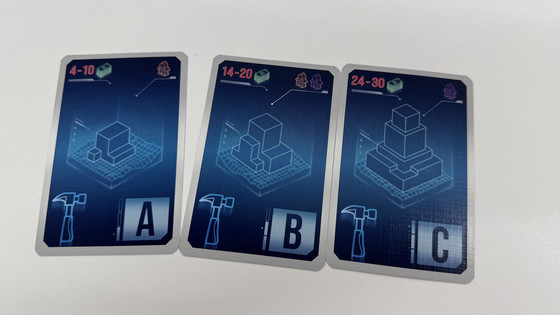
◆ Try playing with three people
The game involves each player taking turns earning victory points, and the player with the most victory points at the end wins.
On a player's turn, they first take one suitcase token from the common stock.
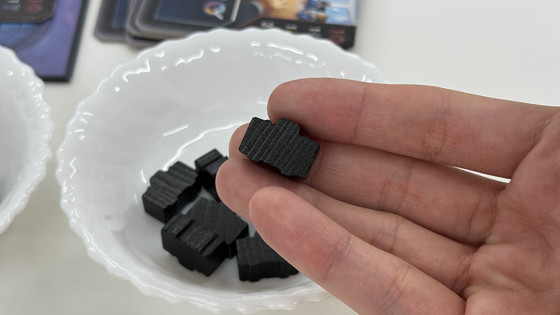
Then, place that suitcase token on the suitcase-shaped space to the left of the conglomerate tile. The player can then perform the actions of the icons on the conglomerate tile in any order during their turn.

For example, the following icon is a 'Faction Action' that allows you to select one disk on the faction board and move it one space. If there is a check mark, you can move the disk one space or get the materials to the right of where the disk is currently placed. For example, in the following case, you can move the red disk one space to the right, or get either 6 Billy funds or 8 victory points.

Regarding victory points, the rule manual said, 'Hide the victory points you have earned in your pocket (that's what it means).' Victory points are counted when the score is calculated at the end of the game, but until then, not only your opponent but also you will not know how many points you have earned. Victory points are earned with billy cards, so you feel like you are making a secret fund by hiding some of the funds you have earned by implementing various policies and carrying out various operations in your pocket.
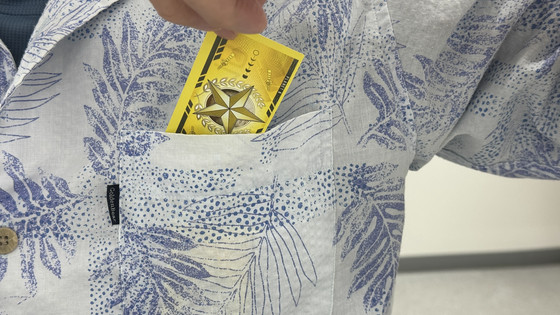
The worker token icon is a 'worker action' that allows you to gain a specified number of artisan tokens or skilled workers from the common inventory, or place them on a building card.
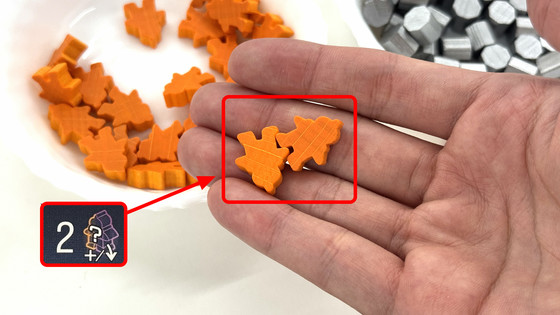
The gear icon is a 'production action' that allows you to produce materials.
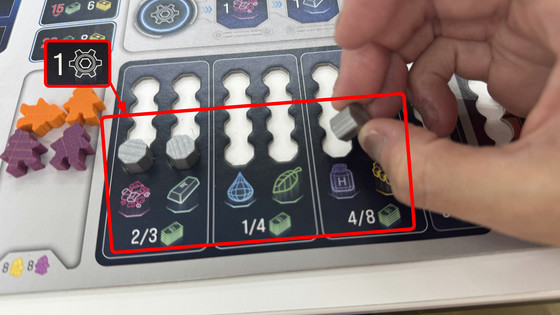
The type and amount of materials that can be produced at one time are displayed next to the gear icon at the top center of the player board. There are two columns, so choose one of them. You can also purchase a production token by paying 10 Billy and place it on the square next to the gear icon to update the type and amount of materials you can produce.
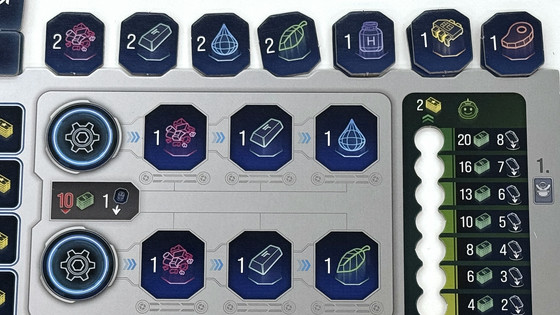
Once you have completed all the actions written on the conglomerate tile, your turn ends and the next player on your left takes their turn.
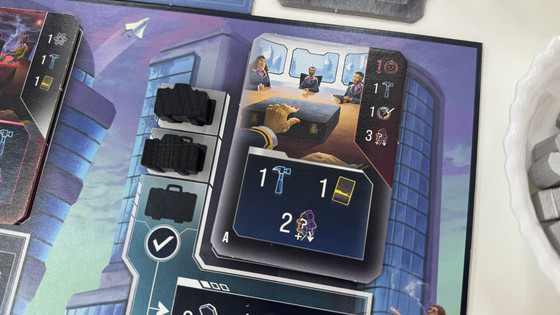
The hammer icon is a building action. You can choose one building card from your hand and place it on the left edge of your player board to build it. However, to build a building, you must pay the construction cost written in the upper left corner of the card. You can also get victory points the moment you build a building.
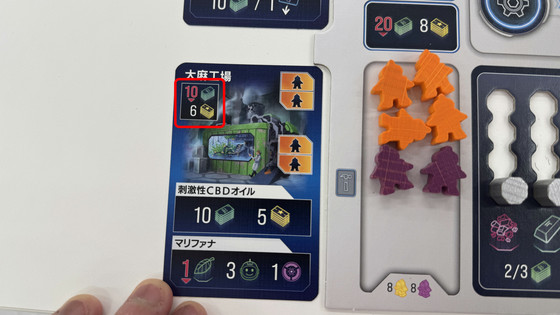
By placing the number and type of worker tokens specified by the worker action on the constructed building card, you can use the action written on the card. For example, by performing the 'Marijuana' action of the 'Cannabis Factory', you can increase the public's satisfaction by 3 and advance the Futurism faction disk by 1 in exchange for consuming one plant resource. 'Consuming grass to produce marijuana will increase the public's satisfaction' is a pretty dark joke.

The satisfaction of the masses has a big impact on the 'elections' that will be held later. Specifically, the higher the satisfaction of the masses, the more votes there will be, and the higher the chances of winning the presidency. In order to become president, you need the support of the masses.
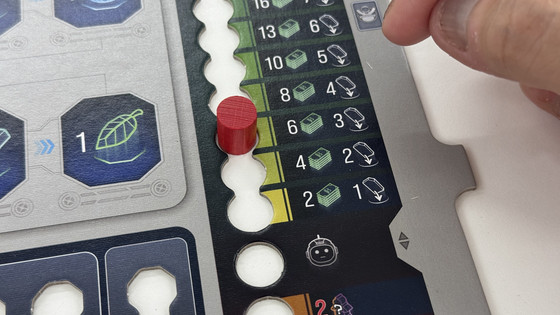
There are various building cards that can be constructed. Among them is a 'Board Game Publisher' card, which also has some meta-related features such as the possibility of 'Planet B Release' and '
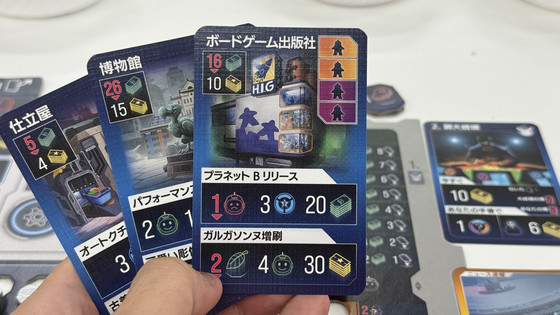
In the newspaper action, you can choose one newspaper card from the top of the three decks and acquire it. For example, the card below is 'I choose number 3,' which allows you to pretend to be the president and draw a law card. However, the card has an 'immoral' icon on the top right. This indicates that the person who chose this newspaper card is 'immoral.' If you are an immoral person, the rewards you receive and the actions you can choose may change.

Law cards are cards that only the president can draw. Law cards have rewards for 'enforcing the law' and 'rejecting the law' written on them, and the rewards change depending on the choice.
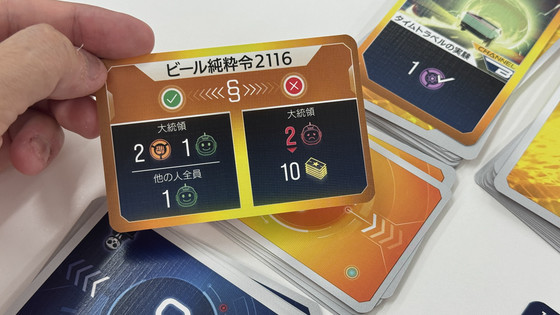
Newspaper cards are placed on top of each other in the bottom right corner of the player board. In other words, if you have a newspaper card with an immoral icon, you will no longer be immoral if you place a card without an immoral icon on top of it. No matter how badly a person is reported as being, if the reports cover it up with subsequent reports, the label of being immoral will be safely peeled off. The public's opinion of a person is constantly changing due to the media.
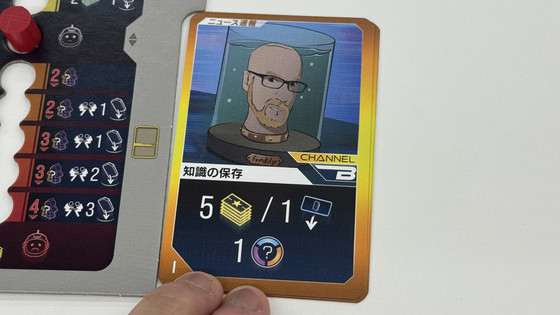
Among the newspaper cards, there was one that seemed to be a current affairs topic, 'SNS Ban Order.' On the card, there was a logo that looked familiar.

When three suitcases are placed on the Conglomerate tile, the world begins to move forward.
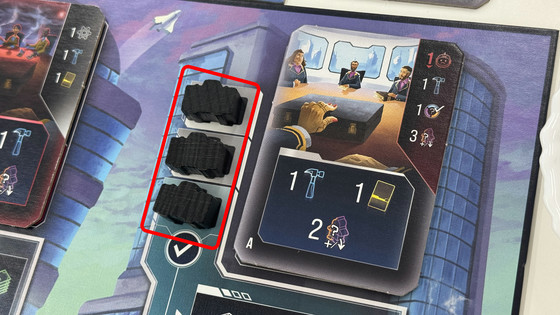
First, when the player who placed the third suitcase finishes their turn, they can put two vote tokens into the bag. However, if they are immoral, they cannot vote and will get 5 Billy funds.
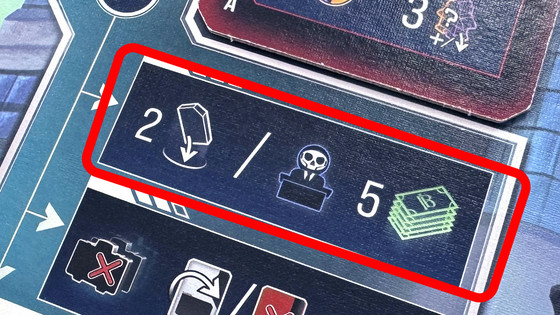
Next, return the suitcase token that was on the Conglomerate tile to the common inventory and flip the Conglomerate tile over.
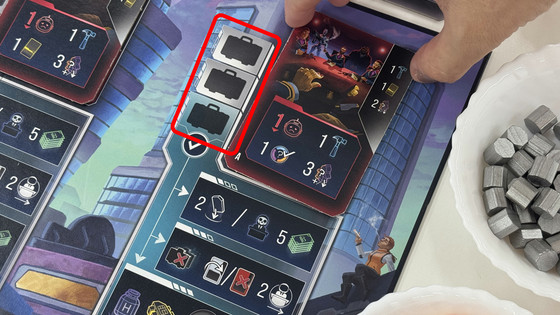
Move the disks in the market. These disks in the market represent the market price of materials, and are the prices at which you can sell surplus materials. For example, in the following case, hydrogen and computer chips were sold for 8 billiards each, but the market price fluctuates and the price drops to 4 billiards each.
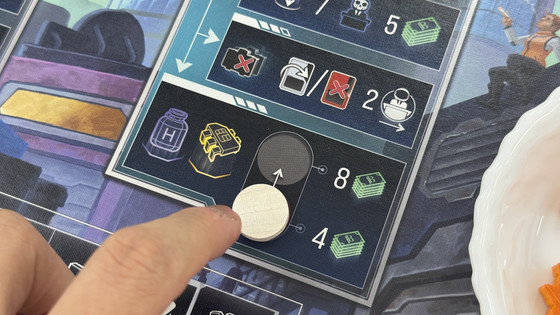
Then move two discs on the election track.

If three suitcase tokens are lined up on a conglomerate tile that has been flipped over, remove the conglomerate tile from the field and place one from the conglomerate tile deck that was set aside. When the last conglomerate tile is placed on the game board, the game ends with that round.
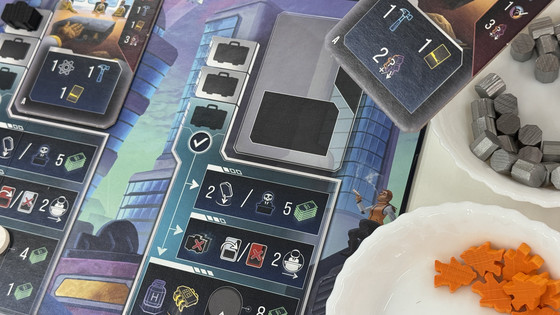
And then the presidential election begins
When the disk on the election track moves all the way to the right, the election will finally take place.
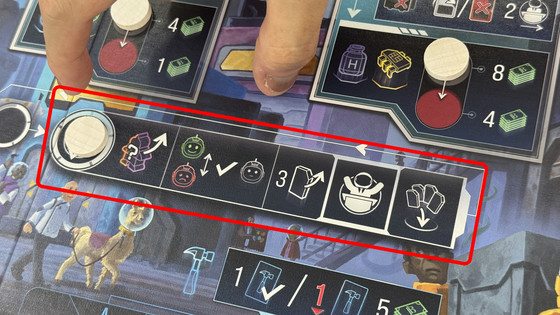
When the election begins, first place all of your worker tokens back onto your player board, off of the building cards.
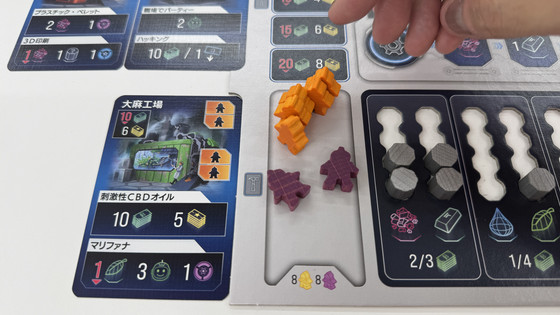
Next, you receive rewards depending on the position of the satisfaction token. If the satisfaction falls below neutral, you must return the worker token to the common stock. The public will lose interest in politicians who have low public satisfaction.
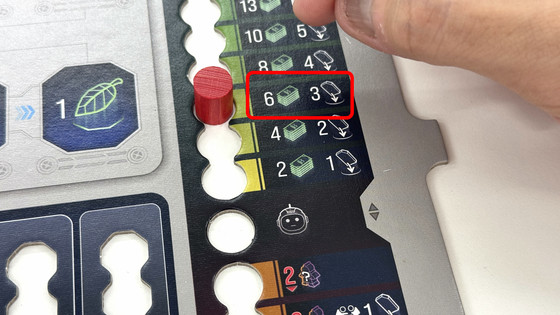
Next, starting with the player who last took a turn, each player draws three vote tokens from the bag in a clockwise direction.

Players take turns drawing vote tokens until all the vote tokens are removed from the bag. The number of valid votes is determined by the number of vote tokens drawn by the player of their own color, and the position of President, Vice President, and LAMA (First Authority for Harassment) is decided in order from the player with the highest number of valid votes. The more vote tokens you put in the bag during the game play, the higher the probability of drawing a token of your color on your turn. However, at the same time, the probability that your opponent will draw a token of your color also increases. The more votes you collect, the easier it is to increase the number of valid votes, but collecting a lot of votes does not necessarily mean you will win. The interesting point is that in order to become president, it is not only important to carefully collect votes, but also luck.
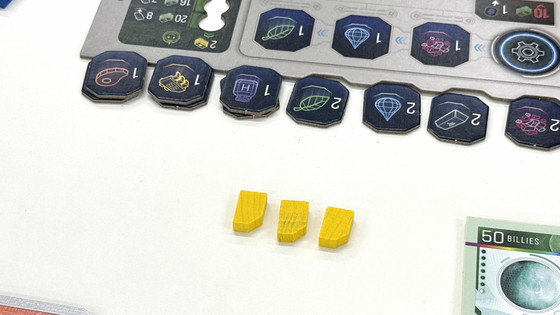
After receiving each position card, perform the 'Now' action written on the position card. After that, return the designated vote tokens of the vote tokens you drew to the player of that color, and return the remaining vote tokens to the bag. In the system, the president will get all of his votes back to him, while the vice president and LAMA will have their votes left in the bag, so in order to be re-elected as president, he will need to gather more votes than the other players.
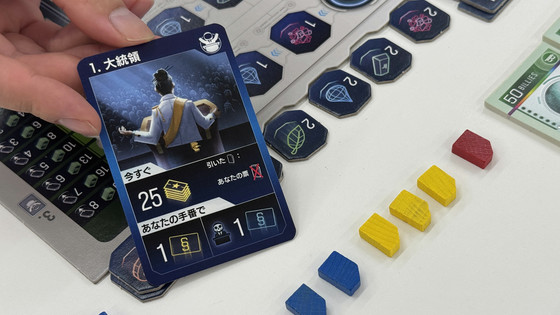
Once the election is over, reset everyone's satisfaction level to neutral.
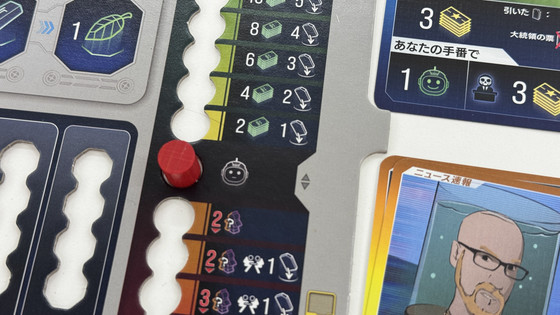
And that brings the election track disc back to square one.

When you get a position, you can take a position action once at any time during your turn. For example, the President can draw a law card and choose to enact or reject it. However, if you are identified as an immoral person by a newspaper card, you can only draw immoral law cards.

Also, when you perform a fraudulent action in the game, you can put a fraud token on your player board. You need to pay funds, but you can get some victory points and take advantageous actions during elections. For example, the following shows a fraud token with '+1' written on it.
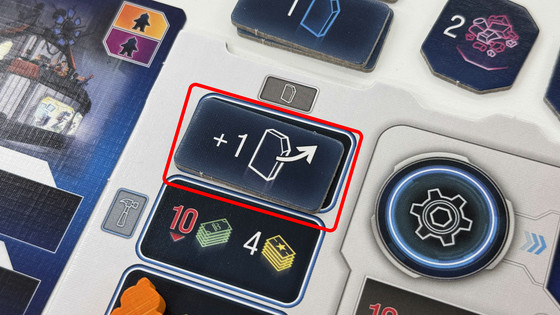
If you buy one +1 cheating token, you can draw four vote tokens from the bag instead of three each time. The more vote tokens you can draw at once, the higher your chances of drawing a token of your color. In other words, your chances of winning the presidency also increase, so it's important to scatter money and cheat in order to gain an advantage in the election.
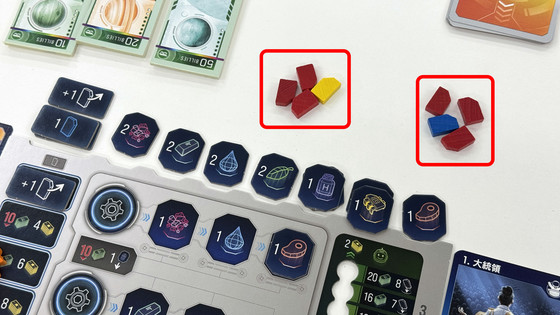
◆End of the game
In this way, elections are held here and there, players take turns, and the game progresses.

Once the last conglomerate tile has been placed on the game board, each player will take one turn each, and the game will end.
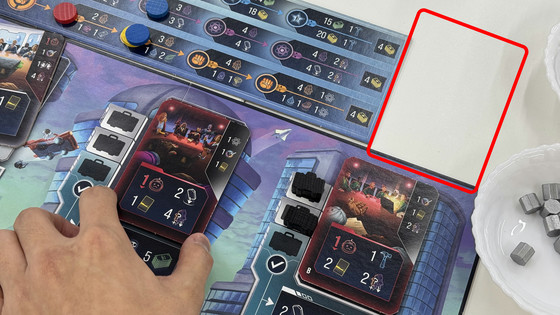
When the game ends, all of your funds, materials produced, and satisfaction are converted into victory points, and added to the victory points you had hidden in your pocket.
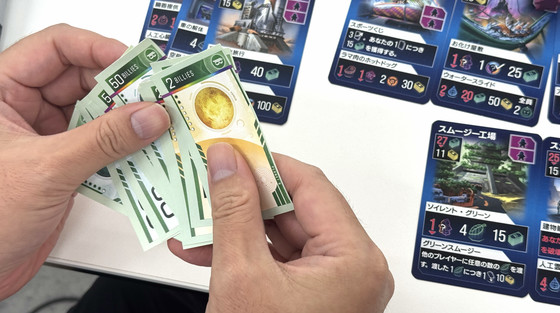
The player who earned the most victory points in this play was the player who was elected president twice during the game. Being elected president gives you 25 victory points as a reward, and you can take very advantageous actions with law cards, so it's very powerful. By scattering money and collecting votes, you can already look ahead to the next election even after the election is over, which is a very politician-like play that led to victory.

◆ Impressions after playing
It was our first time playing with three people, and we checked the rules, but each play took about three and a half hours. However, after the first election, we got used to the game and progressed smoothly. In order to spread out the board and cards, a certain amount of space is required to play, and preparation and cleanup can be a bit difficult, but the components are well designed, such as the currency tokens and vote tokens in the shape of paper money, and the game board and player boards designed to make it easy to see where to place what, and it is designed to reduce stress when playing, which is a good impression.
The editorial staff who played the game said, 'In these games, the materials you desperately collect often end up just being left over, but in Planet B, most of the materials are converted into victory points, so it felt good to feel like your efforts were leading to victory,' and 'The balance between luck and strategy was good, and there were almost no actions that would interfere with your opponent, so it felt good to be able to do what you wanted to do.' The contents of the cards were sometimes black or linked to reality, and there were times when I laughed while playing and said, 'Is this what that means...?'
The election system in particular is very excellent, and the point is that it's not just the probability based on the amount of votes you put in the bag, but you can manipulate the probability by cheating and play to your advantage. Also, since the system is designed so that not only your opponent but also you don't know the victory points, I felt that there were few times when you were so concerned about your opponent's points that you couldn't try something you wanted to do.
'Planet B' is a so-called worker placement game, in which you place pieces on the squares of the action you want to execute. The game itself is just 'processing the action specified for your turn', and although there are many types of actions, all the action symbols are written on cards and tiles, so as long as you understand the meaning of the action symbols, you're OK. Worker placement games tend to be heavy and complicated, but 'Planet B' requires less tedious resource management, making it easy to play even for people who are not familiar with worker placement games.
The price of the Japanese version of 'Planet B' is 13,750 yen including tax. It is also available on Amazon.co.jp, and was available for purchase at the time of writing for 11,049 yen including tax.
Amazon.co.jp: Arclight Planet B (2-4 players, 60-180 minutes, ages 14 and up) Board Game: Toys

Related Posts:







